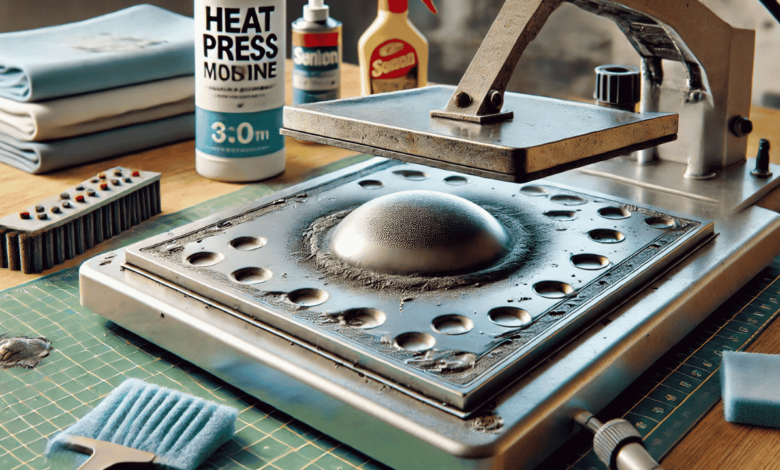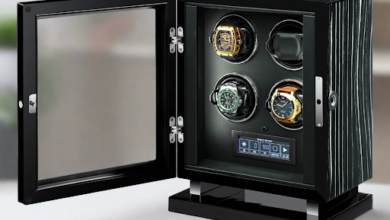A Raised Bump on My Heat Platen: Causes, Fixes, and Prevention for Perfect Transfers

A heat press is essential for businesses and individuals involved in heat transfer printing. However, encountering issues like a raised bump on my heat platen can lead to uneven transfers, wasted materials, and reduced product quality. Understanding what causes these bumps, how they affect printing, and how to resolve them can save time and money. In this article, we will explore the causes of raised bumps on a heat press platen, their impact on transfer quality, methods for fixing them, and preventive measures to avoid future issues.
Understanding the Heat Platen and Its Importance
The heat platen is the upper heated component of a heat press machine. It plays a crucial role in transferring designs onto materials by applying heat and pressure. A flat, even heat platen ensures smooth and consistent transfers, while any imperfections, like a raised bump, can disrupt the process.
Why is a Smooth Heat Platen Necessary?
- Ensures even heat distribution
- Provides uniform pressure for clean transfers
- Prevents damage to fabrics and transfer materials
- Reduces the chances of incomplete or peeling prints
A raised bump on the heat platen can compromise all these factors, making it essential to address the issue promptly.
Common Causes of a Raised Bump on a Heat Platen
Several factors can lead to raised bumps on a heat platen. Identifying the root cause is the first step toward finding a solution.
Residue Accumulation
Over time, adhesives, ink, and transfer materials can accumulate on the platen, forming hardened spots that appear as raised bumps. This is common when using:
- Heat transfer vinyl (HTV)
- Sublimation paper
- Adhesive-backed transfers
Warping Due to Overheating
Continuous use at extremely high temperatures can cause warping, leading to bumps or uneven surfaces. This is more likely in machines without proper temperature regulation or when used for prolonged periods.
Manufacturing Defects
Sometimes, heat plates have imperfections from the manufacturer. Uneven coating, improper finishing, or structural defects in cheaper models can raise areas.
Wear and Tear Over Time
Older machines or those subjected to heavy use may develop indentations, bumps, or surface damage. This happens due to:
- Repeated pressure application
- Frequent heating and cooling cycles
- Physical damage from improper storage or handling
Debris or Foreign Objects
Small particles, dust, or pieces of transfer paper trapped between the platen and material can create bumps. Regular cleaning is crucial to prevent this.
Effects of a Raised Bump on Heat Transfer Quality
A raised bump on a heat platen can negatively impact printing quality in several ways:
Uneven Transfers
Since heat and pressure need to be evenly distributed, a raised bump can cause certain areas of the design to receive more pressure than others, leading to incomplete or faded transfers.
Material Damage
Due to uneven heat application, delicate materials such as polyester, silk, and specialty fabrics may scorch, burn, or crease.
Poor Adhesion of Transfers
If the heat is not applied evenly, vinyl, sublimation ink, or screen prints may not adhere properly, leading to peeling, cracking, or fading over time.
Wasted Materials and Increased Costs
A defective platen results in misprints and wasted materials, increasing production costs and reducing profitability.
How to Fix a Raised Bump on a Heat Platen
Once you’ve identified the cause, you can choose the appropriate solution to fix your heat platen.
Cleaning the Heat Platen
If the bump is due to residue buildup, follow these steps:
- Turn off and unplug the machine to avoid burns.
- Allow the platen to cool before cleaning.
- Use a heat press cleaner or a mixture of vinegar and water to dissolve adhesives.
- Scrape off the residue gently with a soft cloth or non-abrasive pad.
- Wipe dry to remove any remaining moisture.
Sanding the Platen Surface
For small bumps caused by hardened residue or minor imperfections, sanding can help smooth the surface:
- Use fine-grit sandpaper (e.g., 600-800 grit) to rub the affected area gently.
- Wipe away dust and debris with a microfiber cloth.
- Test the surface with a flat object to ensure smoothness before using the press again.
Checking for Warping
If overheating has caused the platen to warp, place a straight edge (e.g., a ruler) against it to check for irregularities. If the platen is significantly warped, you may need to:
- Lower the temperature settings for future use.
- Consider replacing the platen if the warping is severe.
- Contact the manufacturer for warranty claims (if applicable).
Using a Heat Platen Cover or Teflon Sheet
A heat platen cover or Teflon sheet can help mitigate the effects of minor bumps by creating a smoother pressing surface. This is a temporary solution but can improve transfer consistency.
Replacing the Heat Platen
If none of the above methods work, replacing the platen might be the best option. Contact the manufacturer or a heat press repair service for professional assessment and replacement options.
Preventing Raised Bumps on a Heat Platen
Preventive measures can help you avoid future issues and maintain a smooth, efficient heat press operation.
Regular Cleaning Routine
- Wipe down the heat platen after every use to prevent residue buildup.
- Use Teflon sheets to minimize adhesive contact with the platen.
- Deep clean monthly using recommended cleaning solutions.
Proper Heat Settings
- Avoid overheating by using the correct temperature for each transfer type.
- Allow the platen to cool between long pressing sessions to prevent warping.
Handling with Care
- Store the heat press in a dry, dust-free area to prevent debris buildup.
- Avoid placing heavy objects on the heat platen when not in use.
- Regularly inspect for dents, scratches, or structural issues.
Use a Protective Cover
- Investing in a heat platen cover can provide additional protection against debris and scratches.
- It also makes cleaning easier and prevents damage over time.
Conclusion
Encountering a raised bump on your heat platen can be frustrating, but proper maintenance and troubleshooting can resolve it efficiently. Understanding the causes, fixing existing bumps, and implementing preventive measures will help ensure smooth, high-quality heat transfers.
By maintaining a clean and well-functioning heat press platen, you can extend the life of your machine and consistently produce professional-grade results. If you continue to face issues, consulting a professional or considering a platen replacement may be the best action.
You May Also Read: Brand New Heat Press Platen Has a Tiny Metal Bump: Causes, Fixes, and Prevention




